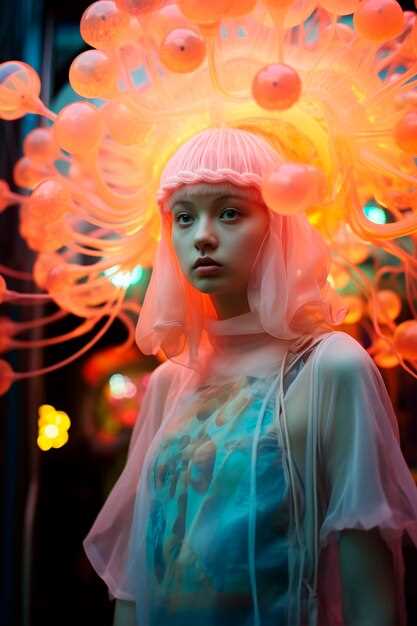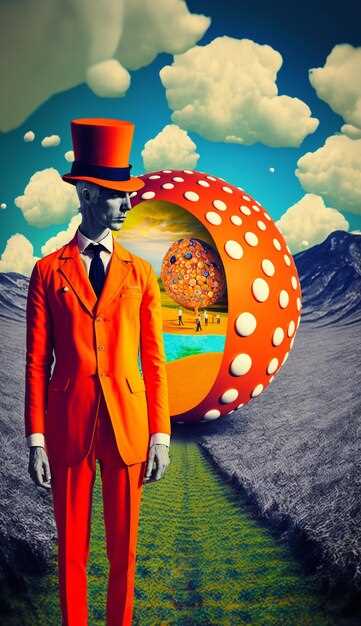
Begin with six anchor artists and study one painting from each today. Note how an image distorts time and space, then log what grabs your attention in childhood memory. Track how a simple object, lips, or other objects becomes strange and symbolic; immediately you see how participation shapes meaning and how dreams blur walls between waking life and image.
Salvador Dalí (1904–1989, Spanish) renders meticulously crafted scenes where time collapses, as in The Persistence of Memory (1931). A large desert-like horizon anchors unsettling imagery, inviting immediate interpretation. In some canvases, an elephant with spindly legs traverses the distance, linking memory to the uncanny.
rené Magritte (Belgian, 1898–1967) tightens language into visual puzzles. His works fuse everyday objects with paradox, most famously The Treachery of Images (1929). The scene invites viewers to question representation; the cubist structure of space makes perception feel deliberate and precise.
Max Ernst (1891–1976, German) blends collage, frottage and automatism. The 1921 piece The Elephant Celebes stacks a bulky figure with gears and a desert backdrop, showing how objects and forms emerge through juxtaposition. Analyzing Ernst trains you to trace shifts between chance and intention, then apply a similar method to your notes.
Yves Tanguy (1900–1955, French) builds precise, large spaces where shapes hover in pristine detail. His Indefinite Divisibility (1942) anchors abstract forms to a dreamlike logic, a reminder to map forms via your own observations and to notice how color and line guide mood.
Joan Miró (1893–1983, Spanish) fashions a playful syntax of symbols. In Harlequin’s Carnival (1924–1925) signs float across a field of color and line, showing how cubist ideas can serve a dreamlike language. Look for how objects and shapes dialogue rather than compete, building a personal map of meaning.
Leonora Carrington (1917–2011, British-born Mexican) crafts mythic, female-centered narratives. Her scenes fuse animal figures, keys and doors, turning dreams into ongoing stories. Focus on symbols that recur across works; this helps you access a private language rooted in childhood memory and female myth.
To deepen understanding, pair gallery visits with catalog information and concise background notes. Create a simple six-work map: artist, year, title, key motif, and one sentence of takeaway. Use the information to anchor your reading of surreal imagery beyond style, and note how your own participation shapes meaning. Observe how a single motif can morph from a lips curve to a distant horizon, and how dreams migrate into everyday perception. Remember the renes of the era–an invitation to examine image and text side by side–and keep a small notebook for future comparisons.
Practical Guide to Surrealism: Quick Paths to the Six Masters and Yves Tanguy
Start today with a focused 15-minute practice: pick one master, map their core principles, then create a quick study sketch that mirrors a dreamlike motif. Repeat with another master each session to build a personal, native approach that stays practical and enjoyable.
Step 1: name the six masters and Yves Tanguy you will track: Dalí, Rene Magritte, Max Ernst, Joan Miró, Giorgio de Chirico (giorgios), and Zdzislaw Beksiński, with Yves Tanguy as the anchor for dreamlike spaces. Acknowledge their world-famous status and jot why each figure matters to your own work, about your initial impressions.
Step 2: study each master’s approach to the unconscious: note multiple recurring creatures and dream motifs; compare to buñuels films by capturing photographs that echo cinematic timing.
Step 3: build a personal glossary: list eight to twelve terms such as lips, stairs, landscapes, clocks, shadows, portals; map each term to its dominant master and note why it is interesting to your practice.
Step 4: incorporate structure with cubist-inspired geometry to arrange figures and spaces, then test how a single focal element anchors a scene.
Step 5: pull in cinematic references; study buñuels-era surrealism and compare pacing, rhythm, and discontinuity with your sketches, keeping your approach professional and focused on craft.
Step 6: apply feminist perspectives today to reframe how figures are depicted and what the imagery may imply; though fixed readings tempt, having curiosity helps you explore nuanced interpretations, and invite feedback when you share.
With six master paths plus Yves Tanguy, you build a flexible, repeatable method: rotate through creators, test crossovers, and keep a clear personal voice while honoring original influences. This native, world-famous constellation invites you to observe, experiment, and refine your own visual language.
Identify each artist’s signature motifs in 3 representative works
Focus on three works per artist and extract recurring motifs to reveal signature language. For painters, the most revealing method is to look through the major paintings and circle back to three representative pieces; these exhibitions show how they began shaping dreamy environments that influence arts today. In the circle of this topic, piccaso peers into the same conversation, and the list below highlights motifs that remain instantly recognizable across eras. ceci conveys how doubt and wonder travel through image and form.
- Salvador Dalí
- Work A (1931) – Motifs: melting clocks, barren desert, ants. Signature language centers time as fluid, paradoxical certainty–time melts into dream logic and the landscape remains deceptively precise, a principle that makes these paintings instantly iconic.
- Work B (1937) – Motifs: reflection in water, double imagery, dreamlike stillness. Dalí wires perception to reveal two worlds at once, a through-line that turns ordinary surfaces into portals.
- Work C (late 1930s–1950s) – Motifs: grand architectural forms narrowing into intimate figures, soft flesh against hard surfaces, surreal crossovers between self and landscape. These elements show a painter who began with precision and invented a theater of the uncanny that remains dreamlike today.
- René Magritte
- Work A (1929) – Motifs: everyday objects in odd contexts, text that unsettles meaning, and the famous ceci n’est pas une pipe. The motif circle here is a critique of representation itself, inviting viewers to question what they see.
- Work B (1953–1954) – Motifs: duplication, concealment, and reversal–men in hats, planes of sky and street, an uncanny order made strange by juxtaposition.
- Work C (1960s) – Motifs: identity and surface with minimal elements; the power lies in quiet substitutions that alter perception and keep the circle of interpretation open.
- Max Ernst
- Work A (1921) – Motifs: hybrid creatures, mechanical parts fused with organic shapes, and frottage textures. The method and the motif together conjure a dreamlike creature-land where anything can emerge from chance.
- Work B (1924) – Motifs: collage of disparate parts, birds, and odd mechanicals; a landscape where fragments compose a surreal narrative that unsettles the rational circle of reality.
- Work C (1934–35) – Motifs: automatic dream, symbolic machinery, and a boundary-pushing composition that fuses eroticism, fear, and wit–an emblem of his bold, experimental principles.
- Joan Miró
- Work A (1924–25) – Motifs: biomorphic shapes, circles, stars, and eyes in bright, reduced color; the language is playful yet decoded with a formal logic that feels almost musical.
- Work B (1925) – Motifs: primordial forms, lines crossing soft spaces, and a sense of cosmic origin; the world is built from simple shapes that read as a language of dreams.
- Work C (1940) – Motifs: constellation-like dots and connected lines; a dream theater where the elements arrange themselves into a strange, comforting order.
- Frida Kahlo
- Work A (1939) – Motifs: dual selves and frontal self-portraits, symbolic heart, and European-Mexican iconography; pain converted into vivid personal emblem, a major facet of her visual statement.
- Work B (1940) – Motifs: thorn necklace, hummingbird, and lush flora; life-and-death motifs mingle with personal myth, creating a compact, dramatic circle of meaning.
- Work C (1944) – Motifs: broken column, exposed spine, and floral surrounds; resilience and vulnerability collide in a dreamlike, intensely personal environment.
- Remedios Varo
- Work A (1957) – Motifs: meticulous, clockwork-like devices, anthropomorphic instruments, and dream-centered laboratories; the images fuse science, magic, and female agency in an orderly, surreal space.
- Work B (1941–1955) – Motifs: women artisans, enigmatic machines, and ritual choreography; the quiet precision reveals a worldview where intellect and enchantment share the same stage.
- Work C (1960s) – Motifs: enchanted interiors with symbolic creatures; environments feel inhabited by intention and care, balancing wonder with a practical, human touch.
Compare how dreamlike scenes are built: composition, perspective, and color
Place a faced figure in the foreground and invite a moon-lit doorway in the distance to anchor the viewer’s gaze and hint at another existence beyond the frame. A pale moon hangs above, clarifying the dream’s atmosphere. A prop like an elephant can appear in the midground to produce an element of whimsy that unsettles the mind.
Use a simple rule of thirds to position the figure, the doorway, and a surprising prop such as an elephant to produce a mystery that invites interpretation.
Let the language of painters guide the look: renowned names like miró, varo, and matta provide templates for dreamlike surfaces that feel playful and purposeful. Keep a realistic edge by adding tactile textures, so the scene remains believable even as the imagery shifts.
Design perspective with depth tricks: arrange a strong foreground, a midground that tilts subtly, and a distant horizon to bend space without losing legibility. catalonia’s artistic heritage and mexico’s bold color traditions push the edge of perception; the signals from miró and varo show how a scene can shimmer between wit and wonder, even in new york galleries.
Color becomes a character: desaturate most areas and let a single hue flash to produce a focal glow. A moon-blue backdrop with a warm orange accent can evoke love and longing while keeping the scene anchored in a realistic rhythm. Flashes of color provide opportunities for the viewer to engage in writing their own interpretation, adding a personal layer to the dream.
Pair these elements with deliberate pacing: let the camera-like progression guide the eye through the layers and alongside the figure. Lived and wounded memories from leading surrealists offer principles that a writer can apply to painting, showing how memory and image share a common language and invite interpretation.
Decode Yves Tanguy’s Indefinite Divisibility: key visual cues and symbolism

Begin by tracing the painting’s most legible cues: the precise, almost clinical rendering, the way space fractures into shifting planes, and the uncanny, floating forms that refuse a stable scale. This approach lets you read how indefinite divisibility operates at perception’s core, hence this viewer gains a route through the scene rather than a fixed snapshot.
Focus on the surfaces: glassy textures, subtle highlights, and the soft, almost feathered shadows that pull forms into a dreamlike geography. Objects sit at impossible distances yet align with foreground elements, creating a loop where horizon, void, and object merge.
Breton’s dream-logic anchored Surrealism, and Tanguy evolved that approach with a painter’s obsession for exact description. A pomegranate-like core form can function as a seed of space, a symbol for consciousness’s interior. The scene radiates a carnival of juxtapositions where childhood reveries meet adult absurdity.
leonoras contributed to discussions about allegory and viewer assumptions; together with René, the dialogue about what the painting means evolved beyond a single reading. However, the work remains stubbornly undecidable, inviting methods that test how arrangement, scale, and perception generate meaning, while an andalusian silhouette hints at broader cultural memory woven into the image.
To read effectively, track the smallest figures: how a distant object lines up with a foreground element, where a line becomes a surface, and how color shifts turn a form into a symbol. Avoid pablum explanations; instead examine how the painting’s density challenges the viewer’s assumptions and shifts consciousness.
| Visual cue | Symbolic reading |
| Floating, biomorphic shapes | Disorients scale; signals a fluid reality where perception and memory blend. |
| Glassy surfaces and precise edges | Creates a sense of rigorous description within a dreamscape. |
| Long shadows and a muted palette | Extends space and time, anchoring objects to a non-linear plane. |
| Absent horizon; space feels indeterminate | Indefinite divisibility of the scene invites multiple readings. |
| Pomegranate-like core form | Centre of space; interior depth of consciousness as a symbol. |
| Andalusian silhouettes | References cultural memory; enriches mythic readings and cross-cultural resonance. |
Practice a quick technique to imitate surreal textures
Use a quick texture trick: press handmade reliefs into a thin layer of acrylic gel on a board, lift to reveal irregular imprints, then glaze with semitransparent color to mimic bizarre surfaces that challenge the mind.
Some painters wrote about texture studies that influenced a generation, and this method echoes the explorations that Dalí, rayograph, and other masters pursued in the 20th-century.
- Materials: handmade items (leaves, fabric scraps, small animals figurines, metal shavings), a flat board, gesso, acrylic gel, and translucent paints. This set mirrors tactile explorations that encouraged a strong, handmade presence in paintings and drawings by painters who flourished in that era.
- Base layer: apply a thin gesso coat, then brush on a translucent gel to form a pliable ground. This handmade base gives you a responsive surface, not a flat print.
- Imprint step: press the objects into the wet gel, lift, and let the pattern dry. The result reads as an object in a dream and can become a description of a strange moment in a mind-bending scene.
- rayograph-inspired variation: place small objects on matte paper and expose it behind the light to generate ghosted textures; or simulate that look with a photopolymer transfer or a reversed-image print. This adds a surreal edge to your images.
- Color pass: apply a restrained palette (one cool tone, one warm tone) to emphasize depth. Use a mix of ochre, ultramarine, and burnt umber to create an italian manner of shading that evokes classic chiaroscuro while keeping the surface tactile.
- Series concept: name each piece and write eine short description. A small series with a clear relationship between texture and subject helps viewers connect the texture to the idea behind the image.
- Documentation: photograph the texture in natural light to capture the surface’s tactile quality; include a brief description of the technique (techniques, materials, and intent). Tag the images with keywords like unknown, strange, and dream to guide viewers’ interpretation.
- Fine-tuning: add a final glaze to unify shadows and highlights; adjust contrast to bring out the textures and the feel of the bizarre composition. If you want to extend, repeat the process with variations to keep the result quite organic.
Create a 2-hour self-guided study plan for exploring the artists online and in museums

Begin with a 30-minute online sprint to map three famous surrealist artists. Open Artsper artist pages and major museum collections, then bookmark three works by chiricos, giorgio, and kahlos. Note how exhibitions spread across country and beyond shape reception and influence. Record what you felt fascinated by and mark the motifs that sparked your curiosity.
Watch 2-3 short movies or artist talks that illuminate dreamlike imagery. Compare how different artists approach space and symbol, and note methods you can reuse when creating on paper. Practice drawing quick gestures and thumbnail compositions, then write 2-line notes about color, mood, and texture. See how carrington’s figures and sigmund’s dream theories illuminate your responses, and how kahlos appears alongside chiricos in the archive of exhibitions.
During a local museum visit or a virtual tour, focus on one space with surrealist holdings and another with dream-inspired installations. Compare the most famous artists’ approaches to imagery across different exhibitions, and observe how the country context shapes curatorial choices and how ideas spread. Take notes on display design, grouping by theme or era, and gather details about techniques–from drawing on paper to larger installations–so you can reuse them later when planning your next study today.
Finish with a compact two-page study pack on paper: quick sketches, key motifs, and concise notes. Include a creation map, a short list of references about sigmund and the dream tradition, and a plan for a second 2-hour session today. Use the pack to build a versatile practice that blends drawing with writing, and to assemble a checklist of exhibitions and online pages about chiricos, carrington, giorgio, and kahlos. Actually, this approach caused clearer questions and a concrete plan for your own exploration of dreamlike imagery.
